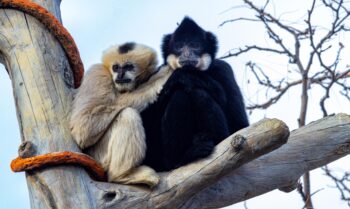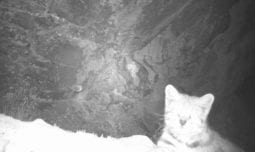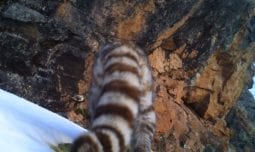March 13, 2019
In Pursuit of One of the World’s Rarest Cats
One Denver Zoo Researcher is Working Hard to Study the Elusive Andean Cat and Preserve the Ecosystem It Calls Home
By Natalie Ingle
Mystery in the Mountains
Not many people have been to the highest reaches of the Andes. Unsurprisingly, as a result, scientists know relatively little about what goes on up there. What we do know is that despite the thin air, frigid temperatures and treacherous terrain, this seemingly inhospitable climate is home to three species of cats. Two of them, pampas cats and pumas, are fairly well-known. But little is known about the third, the Andean cat.
The Andean cat is the most endangered cat in the Americas and one of the top five most endangered cats in the world. It's also one of the hardest to find, thanks in large part to its small size, elusive nature and the sheer inaccessibility of its habitat 10,000 feet above sea level.
But go another mile up the Peruvian Andes and you’ll find the Lake Sibinacocha Watershed, a fragile ecosystem, which researchers say is suffering from the effects of mining-related pollution, climate change and an increase in adventure tourism. Denver Zoo Research Associate Preston Sowell has been working on ways to preserve this ecosystem and thought demonstrating that the Andean cat is present in the watershed could play a key role in those efforts. That’s why he reached out to Denver Zoo in 2017 for help documenting the cat’s presence—something that had never been done before.
With our support and joined by Denver Zoo’s Peru Program Coordinator, Enrique Ramos, Preston launched a new expedition to the lake in May 2018, equipped with 14 brand new camera traps. A seasoned expedition leader, University of Colorado graduate, environmental consultant and photographer, whose work has appeared in National Geographic, Preston knew how to manage a research project at high elevations, and he got exactly what he wanted.
Caught on Camera
In August 2018, Preston sent us an exuberant field report. He’d captured the cat on not one, but three cameras! This proved the Sibinacocha Watershed is home to this highly endangered feline.
Using these photos, reams of scientific data on the area’s biodiversity and even evidence of ancient Incan ruins submerged in the lake (discovered by Preston on an exploratory dive), Preston and his colleagues at the Sibinacocha Watershed Project are building an even stronger case for protecting and preserving this remote landscape.
With the right information, it’s possible to reduce the impact of two of the three major threats to this ecosystem—by encouraging mining companies to clean up their act and getting mountaineers to adopt eco-friendly practices. Preston is hopeful the Peruvian government will see the value in preserving and creating stronger protections for this important watershed, its wildlife and its history.
The Work Continues
This year, Denver Zoo will support Preston on another expedition to continue documenting the Andean cat and to work with a local organization that will help lead a community-based conservation strategy for the watershed.
Preston’s expedition was carried out in collaboration with the Asociación para la Conservación y Estudio de Montañas Andinas – Amazónicas (ACEMAA) and Kate Doyle with the University of Massachusetts.
Read about Preston’s 2018 expedition in United Airlines’ Hemispheres magazine, which includes some of his breathtaking photos, then learn more about Denver Zoo’s work at two other high-elevation Peruvian lakes.
Subscribe
Be among the first to hear the latest animal updates, important stories and details about all the fun happening around Denver Zoo.
Tags
-
 April 15, 2024
April 15, 2024Good Luck, Chuck!
Good Luck, Chuck! Beloved Bachelor Relocating as Part of Asian Elephant Species Survival Plan In a heartfelt and collaborative…
-
 April 15, 2024
April 15, 2024African Impact
African Impact Two New African Field Conservation ProgramsAim to Protect Gorillas + Grey Crowned Cranes We're honored to provide…
-
 March 1, 2024
March 1, 2024Last Place(s) on Earth
Last Place(s) on Earth New Asian Field Conservation Programs Protect Asian Elephants, Sumatran Orangutans + more Indonesia's Leuser Ecosystem…




